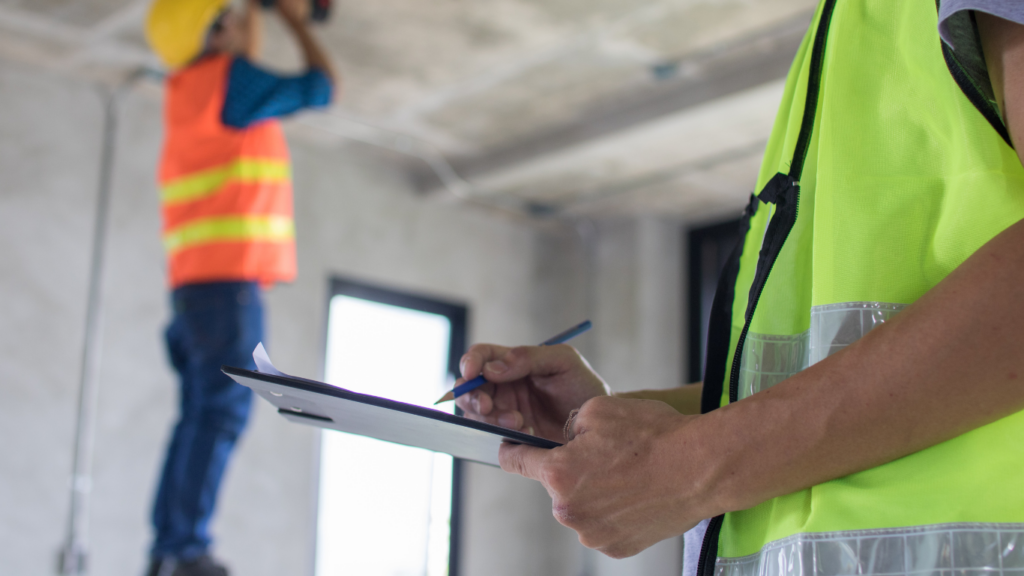Villa Inspection Checklist: What You Need to Know
When inspecting a villa, it’s crucial to cover various areas to ensure the property meets your standards. Here’s a detailed checklist to guide you:
Structural Integrity
Check for cracks in walls and foundations. Minor hairline cracks may be normal, but wide cracks could indicate serious issues. Examine the roof for missing shingles or leaks. A poorly maintained roof can lead to water damage.
Plumbing System
Inspect faucets, showers, and toilets for leaks. Water stains on ceilings or walls often indicate plumbing issues. Ensure the water pressure is adequate and consistent in all areas. Low water pressure might hint at underlying problems.
Electrical Systems
Inspect the electrical panel for any outdated or faulty wiring. Test light switches and electrical outlets to ensure they work correctly. Faulty electrical components can pose a fire risk. Confirm that the villa has adequate lighting in all rooms.
Heating, Ventilation, and Air Conditioning (HVAC)
Check the age and condition of the HVAC system. Older units might need replacement soon. Ensure that the air filters are clean, and the system operates efficiently. Inconsistent temperatures can indicate HVAC problems.
Insulation and Windows
Inspect windows for cracks and ensure they open and close smoothly. Poorly sealed windows can lead to energy inefficiency. Check the insulation in the attic and walls. Proper insulation ensures the villa is energy efficient, reducing utility costs.
Exterior and Grounds
Examine the exterior walls for signs of damage or wear. A well-maintained exterior indicates overall property care. Check for proper drainage around the villa. Poor drainage can lead to foundation issues. Inspect the condition of any additional structures like garages or sheds.
Pest Control
Look for signs of pest infestations such as droppings or damage. Pests can cause significant damage if not addressed promptly. Ensure there are no entry points for pests around doors and windows.
Safety Features
Confirm that smoke and carbon monoxide detectors are functioning. Safety features are critical for the well-being of residents. Check for secure locks on doors and windows to ensure adequate security.
Documentation and Warranties
Request all relevant documentation, including warranties for appliances and systems. Proper documentation can provide peace of mind. Verify that all renovations and repairs have been done legally and up to code.
Inspecting these areas thoroughly can help you make an informed decision about purchasing a villa. Following this checklist ensures that your investment is sound and that your new home meets your expectations.
Exterior Inspection

Thoroughly inspecting a villa’s exterior is crucial for ensuring durability and long-term value. Here’s a detailed guide to examine key exterior components:
Roofing and Gutters
Inspect the roof for missing, cracked, or curled shingles that might lead to leaks. Check for loose or damaged flashing around chimneys and vents. Look inside gutters and downspouts to ensure they are free from debris. Ensure gutters are securely attached and downspouts direct water away from the foundation to prevent water damage.
Foundation and Structural Integrity
Look for visible cracks in the foundation, especially those wider than 1/4 inch. Note any uneven floors, which might indicate foundation issues. Examine the exterior walls for signs of bulging, leaning, or deteriorating materials, focusing on areas prone to moisture. Pay attention to windows and doors to ensure they open and close smoothly, indicating a stable structure.
Landscaping and Drainage
Evaluate the landscaping to check if it slopes away from the property, facilitating proper drainage. Identify areas with pooling water, which might signal drainage problems. Inspect trees and large shrubs for roots growing towards the foundation, potentially causing structural risks. Ensure that irrigation systems are working correctly and that drainage paths are clear to prevent water buildup.
Interior Inspection
Conducting a thorough interior inspection is crucial for identifying potential issues within the villa. The focus should include plumbing, electrical systems, HVAC, insulation, and windows.
Plumbing and Electrical Systems
Inspect water pressure by turning on faucets and showers. Look for leaks around sinks, toilets, and water heaters. Check the main water shut-off valve for easy access. Test all electrical outlets and light switches. Verify the condition of the electrical panel and wiring. Be cautious of any exposed wires or outdated electrical systems.
Heating, Ventilation, and Air Conditioning (HVAC)
Check the functionality of the HVAC units by turning them on and testing different settings. Listen for unusual noises and check for any strange odors. Inspect air filters for cleanliness. Verify the age and maintenance history of the HVAC system. Examine ductwork for signs of mold or leaks.
Insulation and Windows
Inspect walls and attics for adequate insulation. Ensure windows are properly sealed and not drafty. Test window locks and open/close mechanisms. Look for condensation or moisture buildup around window frames. Verify the type of window glass used and its energy efficiency ratings.
Safety and Security
Ensuring a villa’s safety and security is paramount. I inspect each aspect meticulously to identify any vulnerabilities.
Security Systems
Check for installed security systems like alarms, cameras, and motion detectors. Confirm functionality and coverage areas. Ensure proper monitoring services are connected, if applicable.
Locks and Entry Points
Examine locks on all doors, including deadbolts and electronic locks if present. Test the integrity of window locks and other entry points. Secure entry points deter unauthorized access.
Lighting
Evaluate exterior and interior lighting, focusing on visibility at night. Ensure pathways, entrances, and critical areas are well-lit. Motion-sensor lights provide additional security.
Fire Safety
Inspect smoke detectors and carbon monoxide detectors. Functionality is key; replace old batteries. Check fire extinguishers for proper placement and expiration dates.
Emergency Exits
Check for clearly marked emergency exits. Ensure all occupants can easily access exits in case of fire or other emergencies. Compliance with local regulations is essential.
Fencing and Gates
Examine perimeter fences and gates for sturdiness and locks. Secure fencing discourages intruders and enhances safety. Wooden, metal, or composite materials determine maintenance needs.
By prioritizing these safety and security elements, I ensure a villa is a safe and secure investment, providing peace of mind.
Legal Documentation
Legal documentation forms a crucial part of the villa purchase process. This involves verifying ownership, checking for any legal disputes, and ensuring compliance with local regulations. To streamline this, create a detailed checklist for essential documents and their verification steps.
Title Deed
- The title deed proves property ownership.
- Confirm the seller’s name matches the details on the deed.
- Ensure there’s no ambiguity regarding the property’s location, boundaries, and classification.
Sales Agreement
The sales agreement outlines terms and conditions of the sale. Verify the agreement includes details on payment schedules, possession date, and any contingencies. Both parties’ signatures validate the contract’s legality.
Encumbrance Certificate
An encumbrance certificate ensures the property is free from any legal or financial liabilities. Cross-check the certificate for the specified period to confirm no existing mortgages, leases, or other encumbrances.
Property Tax Receipts
- Property tax receipts demonstrate the seller’s adherence to local tax regulations.
- Review receipts for at least the past five years to confirm timely payments.
- Ensure the property’s tax details match the municipal records.
Building Approval Plan
- A building approval plan confirms the construction has legal backing.
- Verify the plan is sanctioned by the local municipal authority.
- Check that the villa’s construction adheres to the approved plan to avoid future legal hassles.
Occupancy Certificate
An occupancy certificate certifies that the building is fit for occupancy. Ensure the certificate is issued by the local governing body. It indicates compliance with building codes and safety standards.
Commencement Certificate
A commencement certificate indicates authorized start of construction. Get this certificate from the local municipal corporation to ensure lawful beginning of the villa’s construction process.
Khata Certificate
A khata certificate validates the property’s existence in municipal records. Ensure it includes details like the owner’s name, property dimensions, and location. This document is essential for property transactions and legal compliance.
Keeping these documents verified and organized ensures a smooth villa purchase process, safeguarding your investment from legal complications.

 Ron Wilson has played a vital role in the establishment of Villa Estates Luxe, bringing his expertise in property management and investment strategies to the project. His guidance has been invaluable in developing comprehensive buying guides that empower potential villa owners to make informed decisions in a competitive market. Ron's in-depth knowledge of market dynamics has informed the platform's analysis and reporting, allowing users to navigate complex real estate trends with confidence. His commitment to excellence and dedication to educating clients have not only enhanced the platform’s credibility but have also established Villa Estates Luxe as a go-to source for industry insights and investment strategies in the luxury villa sector.
Ron Wilson has played a vital role in the establishment of Villa Estates Luxe, bringing his expertise in property management and investment strategies to the project. His guidance has been invaluable in developing comprehensive buying guides that empower potential villa owners to make informed decisions in a competitive market. Ron's in-depth knowledge of market dynamics has informed the platform's analysis and reporting, allowing users to navigate complex real estate trends with confidence. His commitment to excellence and dedication to educating clients have not only enhanced the platform’s credibility but have also established Villa Estates Luxe as a go-to source for industry insights and investment strategies in the luxury villa sector.